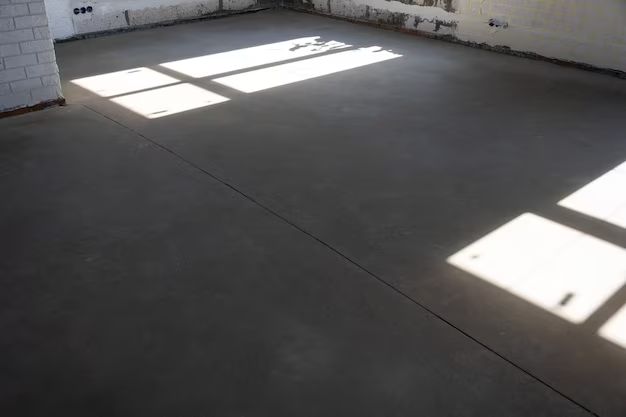Yes, there are several ways to smooth dried concrete to improve its appearance and durability. Concrete is a common building material made from a mixture of cement, aggregate (sand and gravel) and water. When first poured, concrete has a wet, workable consistency that allows it to be shaped and smoothed. However, as the concrete cures and dries, it becomes hard and unworkable. At this point, the surface is set and can no longer be reshaped without taking special measures. Fortunately, it is possible to smooth and finish hardened concrete through various methods ranging from simple manual techniques to more extensive mechanical processes. The appropriate concrete smoothing method depends on the size of the project, the condition of the concrete, and the desired final appearance.
Page Contents
Why Smooth Concrete?
There are several reasons why smoothing or finishing dried concrete is desirable:
- Improves appearance – Smoothing creates a uniform, professional look.
- Easier to clean – A smooth finish prevents dirt and debris from collecting in pores and crevices.
- Increases durability – Sealing the surface helps prevent moisture absorption and damage from weathering.
- Safety – Smoothed concrete eliminates tripping hazards from uneven surfaces.
- Corrects flaws – Levels out low spots, fills voids, repairs cracks and other imperfections.
Leaving concrete unsmoothed often results in an uneven, bumpy and unattractive surface that is difficult to maintain over time. Smoothing and finishing fixes these issues, providing an attractive, easy-to-clean surface.
Manual Smoothing Techniques
For small DIY projects, concrete can often be smoothed using simple manual techniques and hand tools. Here are some common methods:
Sanding
Using a concrete sanding block, pole sander or orbital sander can smooth out small imperfections. Hand sanding requires physical effort but is inexpensive and enables finishing difficult-to-reach areas. The concrete surface should be wet sanded to prevent creating excessive concrete dust.
Grinding
A concrete grinder has rotating discs that abrade and smooth the surface. Angle grinders, floor grinders and hand-held grinders can all be used, depending on the scale of the project. Grinding generates concrete dust requiring safety precautions.
Applying a Topping
Concrete resurfacing toppings consist of a layer of fresh concrete or cement-based material that is troweled onto the existing surface to create a smooth finish. Topping resurfaces large areas cost-effectively.
Patching Materials
For repairing small cracks and defects, polymer-modified patching compounds can be applied with a trowel or putty knife and smoothed once dry. These are available in concrete-colored blends.
Etching
Etching involves applying an acidic solution like muriatic acid to exposed aggregate concrete. This chemically dissolves areas to smooth and even out the surface. Proper handling of acidic etchants is crucial for safety.
Mechanical Concrete Smoothing
For commercial and industrial settings, mechanized equipment is used to smooth and polish concrete floors and slabs. Popular methods include:
Walk-Behind Troweling Machines
These ride on the concrete surface under their own power. Rotating trowels smooth and finish the concrete to a polished sheen. They are much faster than manual troweling.
Ride-On Power Trowels
Similar to walk-behind models but the operator rides on a platform. The extra weight improves smoothing on large flat areas like warehouses.
Concrete Planers
A concrete planer has a large rotating drum embedded with abrasive planing heads to level and smooth out the concrete surface. Some models are equipped with vacuum systems to contain concrete dust.
Concrete Grinding and Polishing
This system uses a sequence of grinding and polishing tools of progressively finer grit to smooth and hone concrete to a glossy finish. It can eliminate small imperfections and expose aggregate.
Surface Retarders and Liquid Densifiers
Chemical treatments are applied to strengthen, harden and smooth the top surface layer of the concrete. Timing of application is critical.
Choosing a Concrete Smoothing Method
When deciding on an appropriate concrete smoothing technique, consider these factors:
- Surface area – Larger areas warrant mechanical smoothing methods.
- Location and accessibility – Select suitable tools that can access the space.
- Existing condition – Repairs may be needed before smoothing if the surface is deteriorated.
- Type of concrete – Certain methods work better for specific concrete mixes.
- Desired finish – A polished finish requires more intensive smoothing.
- Timeframe and budget – Labor, equipment and material costs vary.
It’s best to consult with an experienced concrete contractor to determine the optimal smoothing process for your situation. Proper planning helps ensure a successful outcome.
Tips for Smoothing Concrete
Here are some useful tips to keep in mind when taking on a concrete smoothing project:
- Allow adequate curing time – Smoothing green concrete can damage the surface.
- Work in sections – Dividing the area makes the job more manageable.
- Wet surface – Reduces dust and friction during sanding or grinding.
- Wear protective gear – Masks, goggles and ear protection when needed.
- Clean between smoothing steps – Removes debris that could mar the finish.
- Follow safety procedures – Read equipment guidelines and heed warnings.
- Check for flaws – Spot treat cracks, spalls or low areas before general smoothing.
- Consider sealing – A protective sealer prevents stains and enhances polish.
Proper preparation, care and technique will provide the best results when smoothing hardened concrete. Taking the time to do it right will be rewarded with an attractive, durable surface.
Conclusion
Although dried and cured concrete becomes hard and inflexible, it can still be smoothed and finished to improve appearance. For small DIY jobs, manual sanding, grinding, patching and topping can resurface the concrete. On a larger scale, specialized power trowels, concrete planers, grinders and chemical treatments efficiently smooth and polish slabs. The right method depends on the specific project requirements. With some labor and the proper tools, it is possible to turn a rough, flawed concrete surface into an attractive, uniform finish. Taking the time to smooth concrete surfaces makes a big difference in extending the life of any concrete work.
